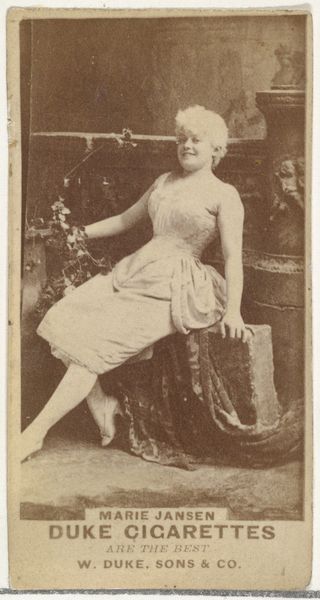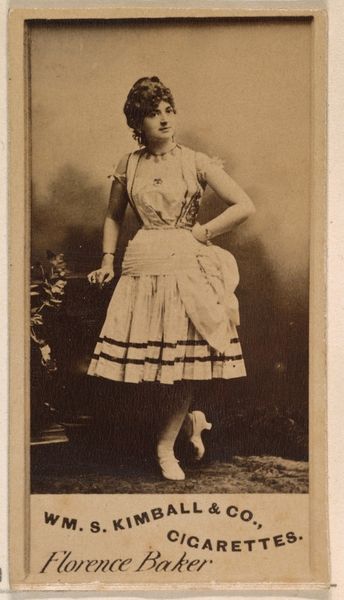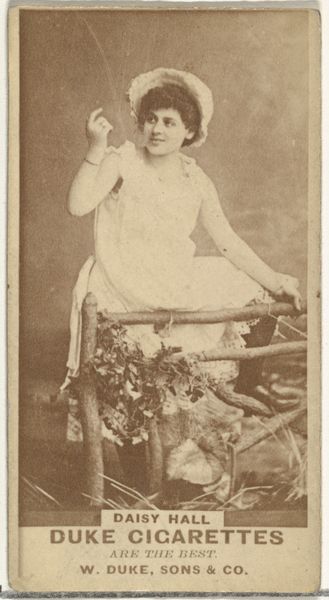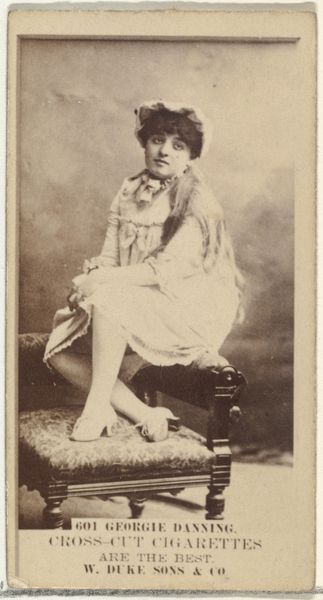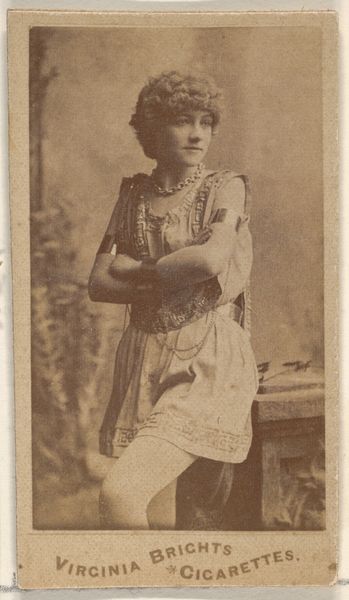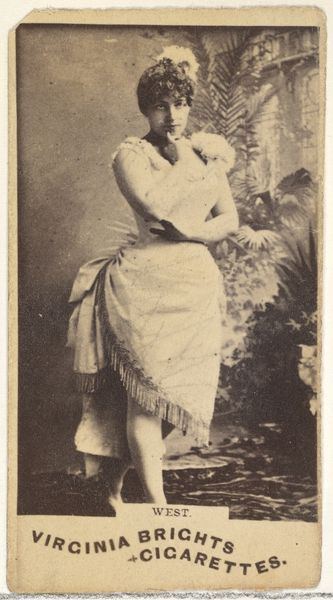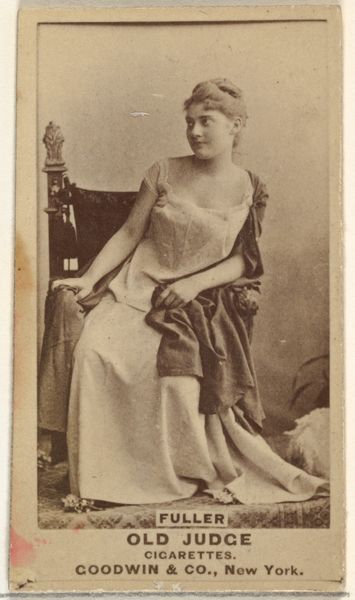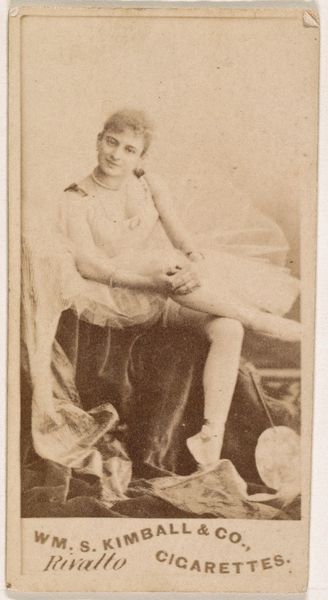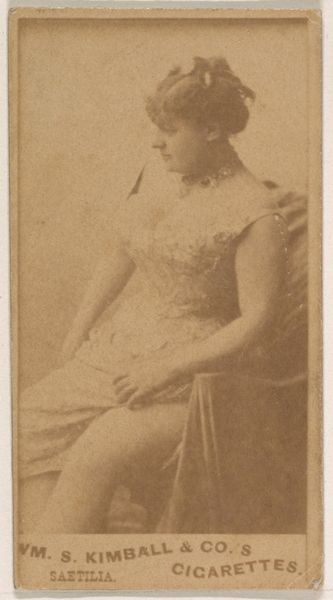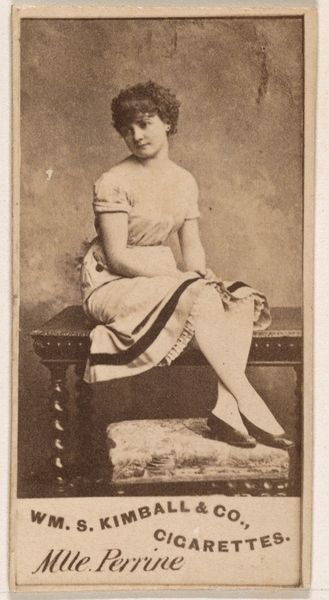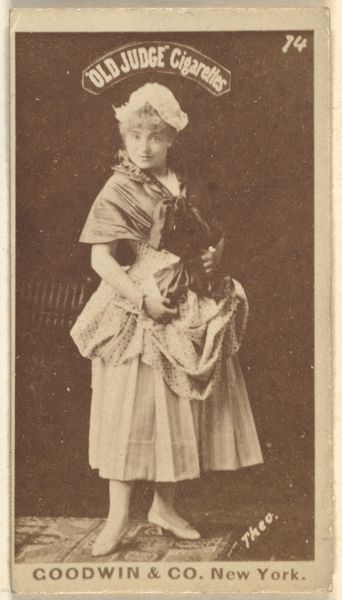
Card Number 177, E. Laboulette, from the Actors and Actresses series (N145-6) issued by Duke Sons & Co. to promote Duke Cigarettes 1880s
0:00
0:00
drawing, print, photography
#
portrait
#
drawing
# print
#
figuration
#
photography
Dimensions: Sheet: 2 11/16 × 1 3/8 in. (6.8 × 3.5 cm)
Copyright: Public Domain
Curator: This sepia-toned card, dating back to the 1880s, comes from a series issued by Duke Sons & Co. to promote their Duke Cigarettes. It's card number 177, featuring the actress E. Laboulette. Editor: Oh, she has a beautiful dreamy face! It looks so fragile... it’s making me want a cigarette now. I think the smokey tone of this card gives a warm nostalgia that's totally seductive. I like that "Duke Cigarettes are the best." I guess they were targeting dreamers back then, too. Curator: Precisely! What's fascinating to me is the use of photographic portraiture as an advertising tool. This card, small as it is, elevates what would normally be a very functional, mass-produced product with an image of refinement, and perhaps a bit of celebrity allure. Editor: Definitely a material tactic. It’s not just about the photograph but also the printing processes involved in creating these cards in mass quantities to reach as many consumers as possible. And it worked, apparently. It does give some information as to how it works to have your idol promote things in order to generate sales. What do we think about Duke Sons & Co. doing all this now? Curator: A bit like those celebrity perfumes you see advertised in magazines! Though maybe not quite. Looking at this photograph, what catches my eye are the staging choices: the artificial rocks and plants are arranged like a formal setting that hints at both intimacy and performance. Editor: Right? This is more like mass produced intimacy if anything else, to get as many folks as they could to buy things. That actress wasn't having tea and conversations with all the consumers, right? The picture hints that these smokes are just as fancy. So really, who’s using whom here in this material exchange? The public? The performer? Duke? Everyone? No one? Curator: Food for thought, indeed. Seeing this artifact now, housed within the Metropolitan Museum of Art, feels rather ironic. The card aimed for a mass audience as it traveled out into the world; now its resting place signifies an elevated status and scarcity—in the sense that one has to travel here to engage with the artwork. I do wonder about the millions of these that must’ve circulated then! Editor: I completely agree! This card represents how consumerism affects value and reception throughout time. By considering Duke Son & Co's purpose in printing it back then versus where we have put it now, hopefully these portraits remind us to consider art not just by looking, but questioning how it’s delivered and consumed as well.
Comments
No comments
Be the first to comment and join the conversation on the ultimate creative platform.
